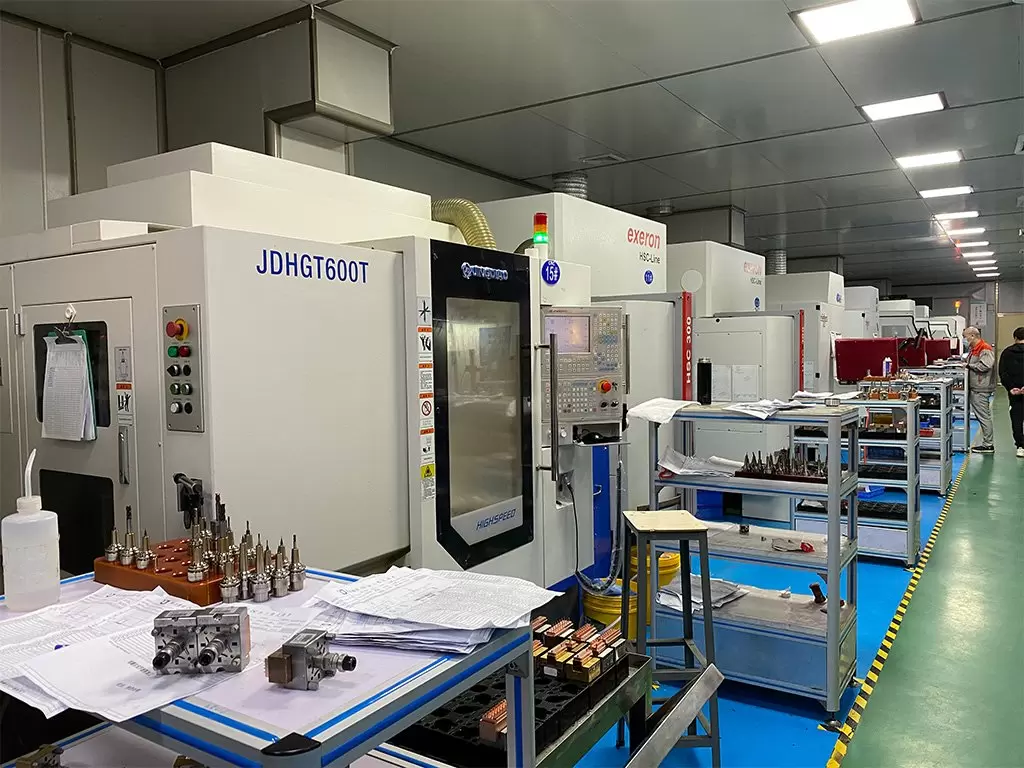Injection molding stands out as a critical process in modern manufacturing. Its versatility, efficiency, and ability to produce intricate designs with precision make it ideal for industries such as automotive, consumer electronics, medical, and more. This article explores how different industries utilize injection molding and why material selection is key to achieving optimal performance, especially for automotive components.
What Is Injection Molding?
Injection molding is a manufacturing process where heated, molten materials like plastic, metal, or rubber are injected into a mold cavity, cooled, and solidified into the final shape. The technology has evolved significantly, making it possible to mold materials for products with precise specifications and high durability—ideal for large-scale production across various industries.
Key Industries Using Injection Molding
- Automotive Industry
The automotive sector relies heavily on injection molding for the production of numerous parts due to its high accuracy and efficiency. This industry requires components that can withstand mechanical stress, extreme temperatures, and UV exposure while maintaining a lightweight profile for fuel efficiency. For instance:
- Dashboard and Interior Components: Injection molding is ideal for crafting dashboards, door panels, and armrests, using materials like acrylonitrile butadiene styrene (ABS) and polypropylene, which offer a balance of strength and flexibility.
- Under-the-Hood Components: For engine covers, cable connectors, and fluid reservoirs, materials like polyamide (PA) are favored for their high heat resistance and durability. Polyamide’s resilience under stress and exposure to chemicals makes it a common choice for under-the-hood parts.
- Lightweight Structural Parts: Automakers increasingly use injection molding to produce lightweight parts like bumpers, trim, and even seats, contributing to overall vehicle fuel efficiency. For example, high-performance engineering resins, such as polyphenylene sulfide (PPS) or polyetheretherketone (PEEK), are used for structural components due to their strength-to-weight ratio.
According to Grand View Research, automotive plastics—including those made using injection molding—are projected to grow significantly in the coming years due to the demand for lightweight vehicles aimed at reducing fuel consumption.

- Consumer Electronics
Injection molding is pivotal in consumer electronics for creating durable, lightweight, and precise parts for devices such as smartphones, computers, and wearables. Key applications include:
- Device Housings: Acrylonitrile butadiene styrene (ABS) and polycarbonate (PC) are commonly used to produce strong, lightweight casings for smartphones, laptops, and wearable devices.
- Internal Components: Small, intricate parts like buttons, connectors, and insulation for wiring benefit from the precision that injection molding offers.
- Medical Industry
In the medical field, injection molding is crucial for producing sterile, high-precision parts like syringes, test kits, and even prosthetic components. Here, materials must meet stringent regulatory standards, such as biocompatibility and sterility.
- Disposable Medical Devices: Polypropylene and polycarbonate are often used for single-use syringes, vials, and surgical tools, ensuring safety and compliance with medical standards.
- Implants and Prosthetics: Biocompatible materials like PEEK and medical-grade silicone are used to create durable, comfortable implantable devices.
Material Selection in Injection Molding
Material selection is crucial in ensuring that injection-molded parts meet industry-specific requirements. Common materials used across industries include:
- ABS (Acrylonitrile Butadiene Styrene): Valued for toughness and resistance, ABS is widely used for automotive interiors, electronic casings, and home appliances.
- Polypropylene (PP): Known for chemical resistance and flexibility, PP is used for items such as packaging, automotive battery casings, and medical containers.
- Polyamide (Nylon): This strong, resilient material is used in automotive parts, electrical components, and even textiles due to its durability under high-stress conditions.
- Thermosetting Polymers: Used for components requiring high heat resistance, thermosets are especially popular in electronics and automotive parts that need to withstand higher temperatures without deforming.
Innovations in Material Technology
Recent innovations in material science have improved the performance of injection-molded parts across industries. For instance, glass fiber-reinforced polymers are increasingly used in automotive applications for enhanced mechanical strength, while bio-based and recycled plastics are gaining traction as sustainable options.
Why Injection Molding Is Ideal for Automotive Applications
The automotive industry’s high demand for precision, durability, and cost-efficiency makes injection molding an ideal choice. Here are a few reasons why:
- Precision: The precision of injection molding allows for consistent production of parts with intricate designs, such as air vent grids, complex dashboard components, and headlamp bezels.
- Lightweighting: Automotive manufacturers are under constant pressure to reduce vehicle weight to improve fuel efficiency and reduce emissions. Injection molding supports this by enabling the use of lightweight polymers like PP and ABS, which can replace heavier metal parts.
- Durability: Parts molded from materials like polyamide and PEEK are durable enough to withstand heat, chemicals, and mechanical wear, which is especially important for under-the-hood applications.
As manufacturers work to enhance vehicle efficiency and performance, injection-molded components will continue to be indispensable. For example, Ford and other automakers have employed injection-molded materials to reduce vehicle weight by replacing traditional steel parts, which contributes to their overall sustainability efforts .
Material Aspects in Injection Molding
Choosing the right materials for injection molding is crucial as it determines the durability, appearance, and performance of the final product. Each industry has specific requirements, and various materials—such as thermoplastics, thermosetting polymers, elastomers, and metals—offer unique properties that make them suited to different applications.
1. Thermoplastics: The Backbone of Injection Molding
Thermoplastics are the most commonly used materials in injection molding due to their versatility, cost-effectiveness, and recyclability. These materials can be reheated and reshaped, making them ideal for high-volume production and sustainable practices. Key types of thermoplastics include:
- Acrylonitrile Butadiene Styrene (ABS): Known for its toughness and impact resistance, ABS is widely used in automotive dashboards, consumer electronics housings, and toys. Its low cost and ease of processing make it a favorite for parts requiring both durability and aesthetic quality.
- Polypropylene (PP): With excellent chemical and moisture resistance, PP is commonly used in food packaging, medical devices, and automotive components like battery cases. Its flexibility and fatigue resistance make it suitable for items requiring long-term durability under repeated use.
- Polycarbonate (PC): This transparent thermoplastic is valued for its strength and heat resistance, often found in optical lenses, protective equipment, and automotive headlamps. Its clarity and high impact resistance make it ideal for products needing both visibility and strength.
2. Thermosetting Polymers: Heat-Resistant and Durable
Thermosetting polymers offer excellent structural integrity and heat resistance, making them suitable for applications where materials need to withstand extreme temperatures and remain stable over time. Unlike thermoplastics, thermosets harden permanently after curing and cannot be reshaped. Common thermosetting polymers include:
- Epoxy Resins: Often used in electronic components, adhesives, and protective coatings, epoxy resins provide excellent electrical insulation and chemical resistance. They’re also critical in industries requiring strong bonds, such as aerospace and construction.
- Phenolic Resins: Known for high thermal stability and flame resistance, phenolic resins are often used in automotive and aerospace parts, electrical circuit boards, and household appliances. These materials ensure safety in high-temperature environments, making them ideal for critical components.
- Silicone: Valued for its flexibility and high-temperature resistance, silicone is popular in medical devices, cookware, and seals. It’s especially useful in applications that require biocompatibility, non-toxicity, and durability under repeated sterilization.
3. Elastomers: Flexibility and Resilience
Elastomers, such as rubber-like materials, are well-suited for products requiring elasticity, durability, and resistance to wear. Injection molding with elastomers enables the creation of flexible and resilient parts used across multiple industries.
- Thermoplastic Elastomers (TPE): Combining the properties of rubber and plastic, TPEs are popular in automotive applications for producing gaskets, seals, and weatherstrips, as well as consumer products like handles and grips.
- Silicone Elastomers: Offering excellent heat resistance and flexibility, silicone elastomers are often used in medical seals, tubing, and implantable devices. Their stability across a wide temperature range also makes them ideal for cookware and electronics.
4. Metal Injection Molding (MIM): Precision with Strength
For industries like automotive, medical, and firearms manufacturing, metal injection molding (MIM) offers a way to produce complex, high-strength metal parts with precise tolerances. MIM combines the flexibility of plastic injection molding with the strength of metals, making it suitable for small, intricate components.
- Stainless Steel: Commonly used in MIM due to its corrosion resistance and strength, stainless steel is favored for medical tools, firearms, and structural parts in the automotive industry.
- Titanium: With a high strength-to-weight ratio, titanium is ideal for aerospace and medical applications where lightweight, biocompatible, and durable materials are required.
5. Specialty and Eco-Friendly Materials
Recently, sustainability has become a priority in material selection. Biodegradable polymers and recycled plastics are increasingly used in injection molding, especially in industries aiming to reduce environmental impact.
- Polylactic Acid (PLA): Derived from renewable resources like corn starch, PLA is a biodegradable thermoplastic commonly used in packaging, disposable cutlery, and medical implants.
- Recycled Polyethylene Terephthalate (rPET): rPET is used in food packaging and consumer goods, particularly by companies striving to adopt more sustainable practices. Its properties closely mirror those of virgin PET, providing durability and clarity.
Material Selection in Key Industries
- Automotive Industry: The automotive industry requires materials like ABS, PP, and nylon, which offer resilience and lightweight properties. Metal components produced through MIM also find applications in high-stress areas such as engine parts.
- Medical Industry: Medical devices prioritize biocompatibility, and thus materials like medical-grade silicone, PEEK, and PC are common. These materials meet stringent safety standards and withstand repeated sterilization.
- Consumer Electronics: For housings and internal components, electronics manufacturers often choose PC for its strength and transparency, ABS for cost-effectiveness, and TPE for flexible parts like cable protectors.
Conclusion
Injection molding is a versatile, cost-effective process essential to modern manufacturing across numerous industries. Each industry—from automotive to consumer electronics to medical devices—leverages injection molding for its unique needs, from producing lightweight, durable car components to crafting precise medical tools. Material selection plays a crucial role, ensuring that each part meets specific industry requirements, whether it’s heat resistance for engine covers or sterility for medical implants.
As materials evolve and technology advances, injection molding will continue to shape the future of manufacturing, offering innovations that meet both practical and sustainable demands. For automotive manufacturers in particular, injection molding remains vital in creating efficient, reliable, and cost-effective solutions that drive the industry forward.


